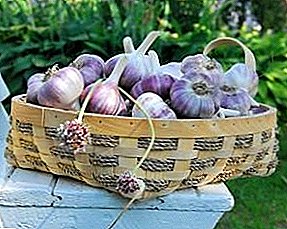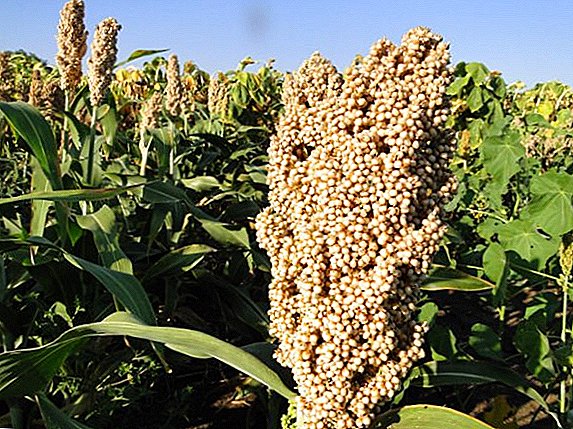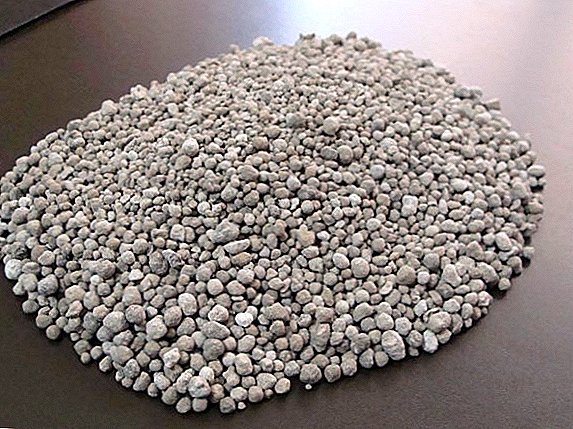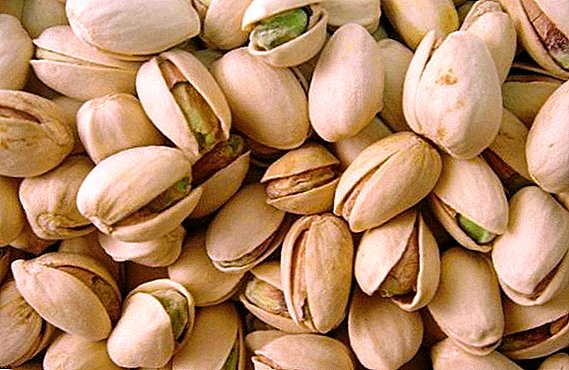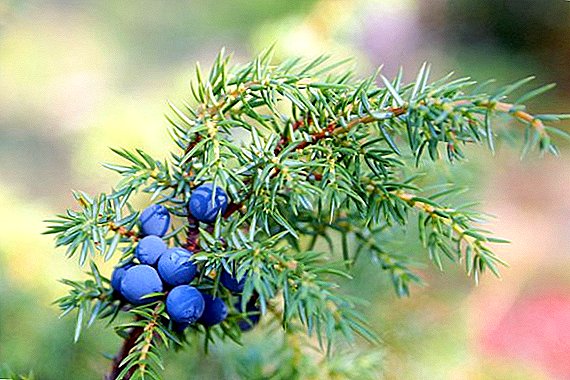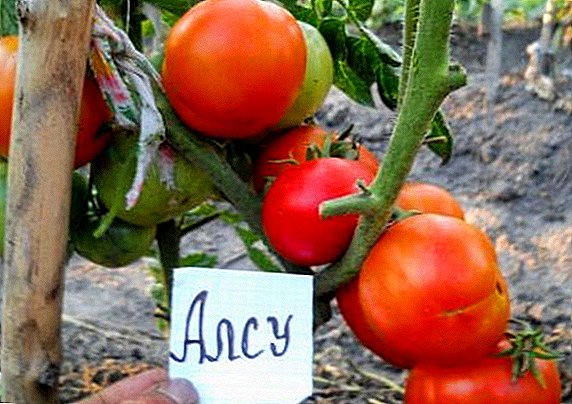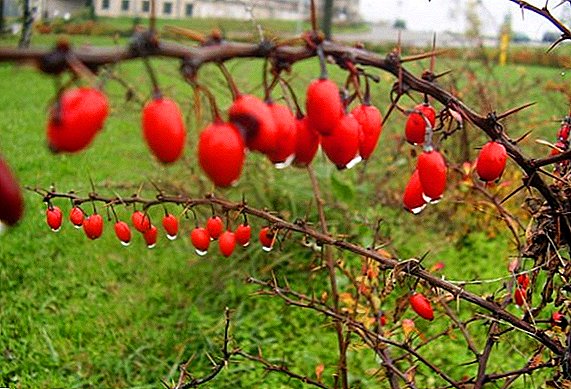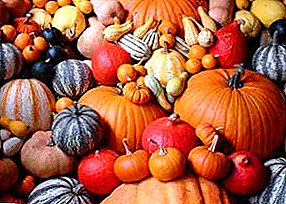
Pumpkin is a particularly healthy vegetable that should grow in every garden. How is it necessary to prepare the seeds? How to grow seedlings culture? The answers to these questions in this article.
Pumpkin - Annual herbaceous plant, brought to us from America. Grow a pumpkin because of its fruit. Depending on the variety, the pumpkin has a different shape and color.
Useful properties of pumpkin
- Pumpkin seeds in traditional medicine are dried, then oil is made from them. Pumpkin seeds are rich in glycosides and steroids, vitamin E, trace elements of potassium, copper, zinc, manganese, selenium, etc., plant proteins and sugars.
- Pumpkin pulp contains peptide fibers that contribute to the normalization of the stomach and the removal of toxins from the intestines.
- It is recommended to use pumpkin for people suffering from overweight: low-calorie vegetable; Vitamin T, contained in the pumpkin, helps to speed up the metabolism and rapid absorption of food; the diuretic property of the pumpkin ensures the removal of excess fluid from the body.
- For kidney disease, pumpkin is recommended as a diuretic.
- Pumpkin is rich in beta-carotene and lutein, which have a beneficial effect on human vision.
Features of growing pumpkins
 Pumpkin can be sown immediately in the soil, and can be planted through seedlings. Best of all, it grows in well-warmed sunny areas. Preparing the soil for planting pumpkins begins in the fall. After harvesting the pumpkin precursors, the soil is freed from weeds and plant residues.
Pumpkin can be sown immediately in the soil, and can be planted through seedlings. Best of all, it grows in well-warmed sunny areas. Preparing the soil for planting pumpkins begins in the fall. After harvesting the pumpkin precursors, the soil is freed from weeds and plant residues.
After the soil is loosened with a mill or hoe, in two or three weeks they dig up to 25-30 cm in depth. During digging, the roots of dandelion, thistle, wheatgrass, grubs and wireworm larvae should be thoroughly removed from the site.
Fertilizers are introduced into the soil simultaneously with its digging. Due to the high rate of growth of aboveground and underground organs, pumpkin has an increased need for nutrients.
Organic fertilizers (on heavy soils) or 15-20 cm (on light soils) are buried up to a depth of 10-15 cm. With a limited amount of organic fertilizers, they can be applied immediately before planting the crop directly into the well.
The day before pumpkin sowing, they dig up the soil, nitrogen fertilizers are applied for digging at the rate of 15-20 grams of fertilizer per 1 sq. Meter. After digging the area is leveled with a rake and start planting seedlings or sowing seeds.
The most common pests of fruit trees.
An interesting topic about planting a garden //rusfermer.net/sad/plodoviy/posadka-sada.
Recommendations for the care of the garden here.
We plant pumpkin seeds
For planting pumpkin seeds, it is best to select full-weight seeds that need to be heated at a temperature of 60 degrees (2-3 hours). This is necessary for a friendly germination of seedlings. To ensure early germination, to acquire resistance of the culture to adverse environmental conditions, seeds before sowing are placed for a day in a solution of one of the growth stimulants:
- Krezacin solution - dilute one stimulator tablet with 100 ml of water;
- a solution of potassium humate - dilute with 4 ml of a stimulator in 200 ml of water;
- Epine solution - 2-7 drops of a stimulant per 100 ml of water.
If you do not have these drugs, you can use wood ash to treat pumpkin seeds: for 1 liter of warm water, take 2 tablespoons of ash, insist one day, periodically stir the solution, then filter and dip the seeds in a gauze bag into it. After that, the seeds are washed with water.
After the seeds are soaked, you can begin their seeding or germination. You can germinate pumpkin seeds in an apartment by wrapping them in a damp cloth for this and placing them in a saucer.
On the site you can germinate pumpkin seeds in a box with scalded sawdust. Spread paper wipes on the sawdust (wet) in 23 layers, on them - pumpkin seeds, then again napkins, then warm sawdust and cover everything with a film. The box is left in a warm place.
Pumpkin seeding time
Depending on the biological characteristics of the pumpkin variety, as well as on the climatic conditions of the region, there are different terms for planting culture. Planting of a douche and large pumpkin begins when the soil has warmed to 10 degrees (at a depth of 10-12 cm), and the air temperature is 15 degrees. Earlier sowing time should provide the plant with heat from biofuels, as well as protection from frost film.
Planting pumpkins in open ground
 When planting a douche and large pumpkin seeds in open ground, they must be embedded in the soil to a depth of 5-8 cm (on light soils) or 4-5 cm (on heavy).
When planting a douche and large pumpkin seeds in open ground, they must be embedded in the soil to a depth of 5-8 cm (on light soils) or 4-5 cm (on heavy).
Seeds of long varieties of culture are sown in a row (the distance between the holes should be about 1.5-2 meters, and between rows - 1.4 - 2 meters).
Pumpkin varieties of pumpkins can be planted square-breeding method according to the scheme: 80 * 80 cm or 1.2 * 1.2 m. The distance between pumpkin seeds should be 3-4 cm. After the seeds are laid out in the wells, they should be watered with a mixture humus and soil in equal quantities.
Planting pumpkin seedlings in open ground
The process of ripening pumpkin since sowing is quite long, especially for late-ripening and thermophilic varieties of culture. The process lasts 120-140 days. In order to get an earlier harvest pumpkin, you can grow its seedlings. Window sills in the apartment are suitable for this, it is desirable that the window sills are well lit.
Also, seedlings are grown in greenhouses, greenhouses or under the film frame. Seeding is best done in the last decade of April or early May. This ensures that the plant will be ready to be transplanted into open ground.
Sowing pumpkin seedlings
 As containers for seedlings, you can use milk bags or peat hollow pots with a diameter of 10-15 cm. Ready peat soil is poured into the containers. Independent preparation of nutrient soil: take humus and sod land in the ratio of 4: 1. Add 4 grams of potassium salt and ammonium nitrate to the bucket of the mixture, as well as 5 grams of superphosphate. After the mixture is moistened and thoroughly mixed (preferably 3-4 times). This mixture is poured into prepared containers and slightly compacted.
As containers for seedlings, you can use milk bags or peat hollow pots with a diameter of 10-15 cm. Ready peat soil is poured into the containers. Independent preparation of nutrient soil: take humus and sod land in the ratio of 4: 1. Add 4 grams of potassium salt and ammonium nitrate to the bucket of the mixture, as well as 5 grams of superphosphate. After the mixture is moistened and thoroughly mixed (preferably 3-4 times). This mixture is poured into prepared containers and slightly compacted.
During sowing, the soil in the containers is watered with warm water, in the center they make a depression of 2-3 cm, in which one pumpkin seed is placed. The process of preparing seeds is the same as when sown directly in open ground. The pots on top cover with plastic wrap and put them on the window sill for germination.
Eggplant: growing and care - an informative article for gardeners.
Learn how to grow tomatoes in the open field //rusfermer.net/ogorod/plodovye-ovoshhi/vyrashhivanie-v-otkrytom-grunte/vyrashhivaem-vysokij-urozhaj-tomatov-v-otkrytom-grunte.html.
Pumpkin care
After sowing pumpkin should maintain the air temperature in the range of 18-25 degrees. As soon as the first shoots appeared, the film is removed and the temperature is reduced by 3-5 degrees (this is done within 4-5 days). In the apartment this can be achieved by airing the room. This ensures the seedlings are protected against stretching.
If the seedlings are still stretched out, then on the eighth or tenth day after the emergence of shoots, turn the subflora knee into a circle and lay it on the ground, covering them with earth to the cotyledon leaves. The field of this pumpkin seedling is grown at a daily temperature of 20-22 degrees, and at night 15-18 degrees. Watering pumpkins should not be plentiful and frequent. Excess moisture can lead to "pampering" of the culture.
 Feed the plant should be twice. The first feeding is carried out on the eighth or tenth day after the emergence of shoots. Growing seedlings in a greenhouse will be better if you take 100 ml of slurry, chicken manure or mullein and 5 grams of garden mixture for 1 liter of water, mix everything thoroughly and pour the area with this solution.
Feed the plant should be twice. The first feeding is carried out on the eighth or tenth day after the emergence of shoots. Growing seedlings in a greenhouse will be better if you take 100 ml of slurry, chicken manure or mullein and 5 grams of garden mixture for 1 liter of water, mix everything thoroughly and pour the area with this solution.
The second dressing is done with any complex mineral fertilizers at the rate of 3-4 grams of fertilizer per 1 liter of water. It should be done immediately before planting the plant in open ground.
A few days before transplanting, it should be hardened. In ready-to-transplant plants, the stem is low and stocky with short internodes, and there are also 2-3 well-developed leaves of dark green color.
Planting seedlings in the soil is carried out a little deeper than she sat in a pot, sprinkling it to the cotyledon leaves. This contributes to the formation of additional roots. When planting roots are compressed by soil, while avoiding the formation of voids.
In order for the resulting pumpkin fruits not to rot from soil moisture, they should be protected from this as follows: 4 stones are placed on the ground, on top of them is a wide slab or board, on which the pumpkin is laid. They do it only when she is still small.
Note to a good gardener - Cucumbers: growing and care.
Advantages of drying mushrooms at home, read here //rusfermer.net/forlady/konservy/sushka/sushka-gribov-v-domashnih-usloviyah.html.
As the ripening of individual fruits produce harvest. Immediately before the onset of frost, you should remove all the fruits of the pumpkin.
Pumpkin must necessarily be present in the diet of each person. Remember this! We hope that thanks to our advice you will grow a large and sweet pumpkin, from which you will prepare the most useful dishes.


 The most common pests of fruit trees.
The most common pests of fruit trees. Eggplant: growing and care - an informative article for gardeners.
Eggplant: growing and care - an informative article for gardeners. Note to a good gardener - Cucumbers: growing and care.
Note to a good gardener - Cucumbers: growing and care.